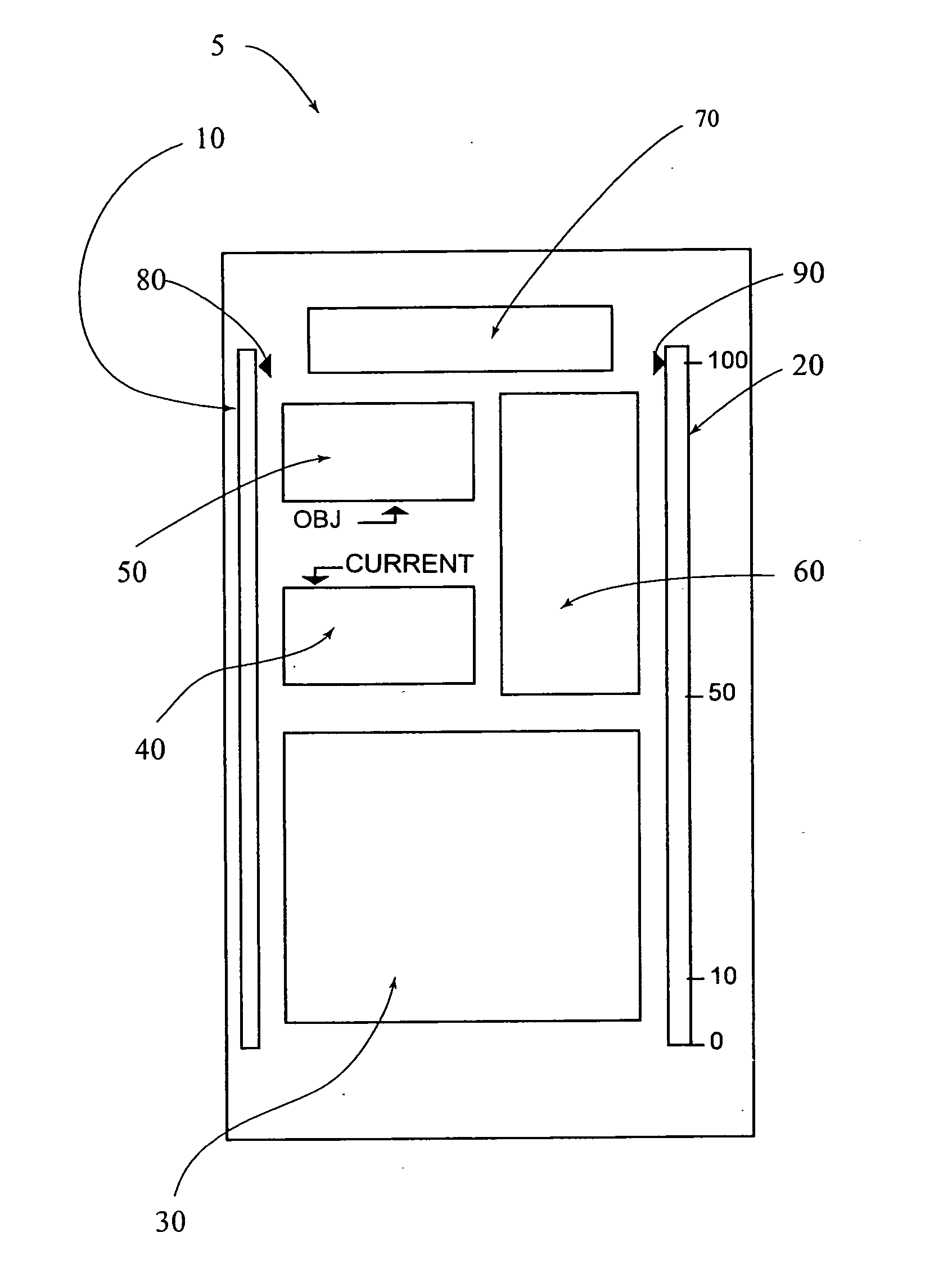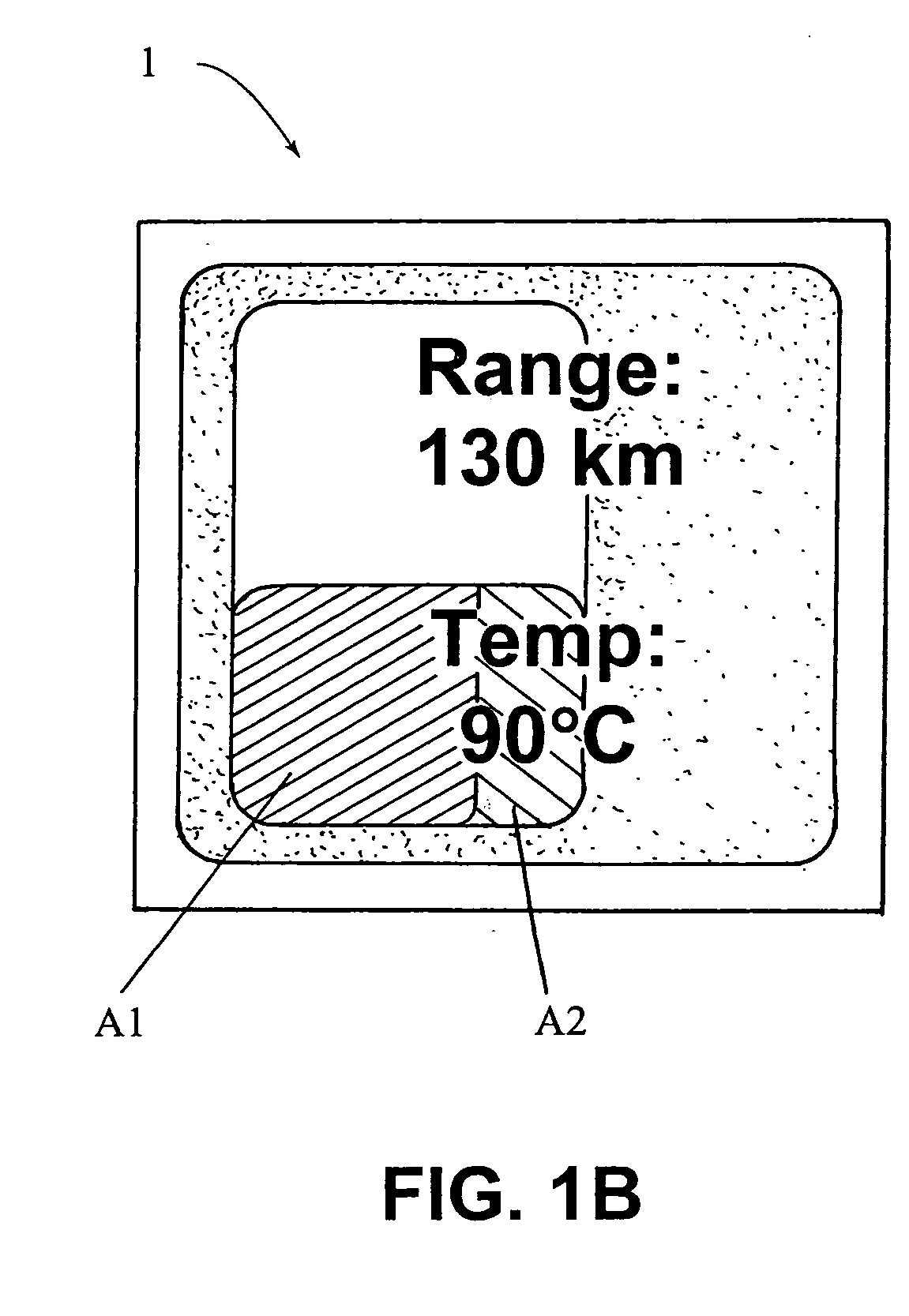System state indicator
a system state and indicator technology, applied in the field of vehicles, can solve the problems of reducing the efficacy of the system to zero, unable to display data, and very low frequency of such incidents
- Summary
- Abstract
- Description
- Claims
- Application Information
AI Technical Summary
Benefits of technology
Problems solved by technology
Method used
Image
Examples
Embodiment Construction
[0075]FIG. 1, which is composed of FIGS. 1A and 1B, depicts a non-limiting display screen 1 according to the invention, adapted to display the temperature of a tire in APL condition or flat running as well as the remaining range, that is the say the number of kilometers that the driver, at time t and under the driving conditions of this time, can travel without damaging or seriously degrading the tire. Such a display applies particularly to the PAX system.
[0076] It should be stated briefly that the PAX system consists essentially of a “support” made from material of the vulcanized rubber type or the like, mounted on a special rim profile. When a tire fails, the vehicle can continue to travel on the said “support”, which prevents damage to the tire sidewalls and in particular shearing thereof. For reasons of overheating and the like, well known to specialists in flat running, it is necessary to limit the speed of the vehicle.
[0077] This system is now well known and a person skilled...
PUM
 Login to View More
Login to View More Abstract
Description
Claims
Application Information
 Login to View More
Login to View More - R&D
- Intellectual Property
- Life Sciences
- Materials
- Tech Scout
- Unparalleled Data Quality
- Higher Quality Content
- 60% Fewer Hallucinations
Browse by: Latest US Patents, China's latest patents, Technical Efficacy Thesaurus, Application Domain, Technology Topic, Popular Technical Reports.
© 2025 PatSnap. All rights reserved.Legal|Privacy policy|Modern Slavery Act Transparency Statement|Sitemap|About US| Contact US: help@patsnap.com



